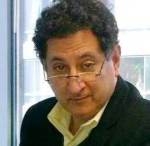Updated
What is Driving the Remake of How Morocco Does Business?
Its recipe for growth is changing the country’s economic profile
Jean R. AbiNader, MATIC
October 8, 2014

Jean R. AbiNader, Exec. Dir., Moroccan American Trade and Investment Center
Recent reports on growth trends in Morocco focused on the seismic shifts in the make up of its economy. Now less reliant on the export of agricultural commodities, growth is spread across many sectors, reflecting both the goals of raising job quality and promoting valued-added and downstream products in existing sectors.
For example, Zawya e-News identified how manufacturing in the automotive and aeronautics sectors have become engines for moving Morocco’s new economy forward. Building on its latest industrial development plan, the country has seen automotive exports jump 37.2 percent year-on-year, electronic exports up 25.2 percent, and aeronautical exports up 14.1 percent. Exports rose more than five percent during the period despite a drop of 13.3 percent in phosphates exports and little expansion in agricultural exports.
According to the Financial Times, there are multiple benefits to the growth of automotive manufacturing. “The country’s auto sector will help push GDP growth up 4.5 to 5 per cent in 2015-2016, from 2.5 per cent in 2014, predicted Capital Economics in a note, making Morocco ‘North Africa’s best performing economy over the coming years’.” Despite this trend, agriculture still has a significant impact on the economy, providing 15-20 percent of GDP, depending on rainfall and market conditions. So the government continues to push ahead with agricultural reforms as well, promoting better water and crop use, accommodating changes in water supplies, and improving access to regional and international markets.
Growth continues across multiple sectors
At a recent tourism conference in Rabat, Minister of Tourism Lahcen Haddad gauged the progress made from 2010 to 2013. Revenues grew more than 78 percent, to $1.3 billion. Flight capacity increased by 10 percent and some 50,000 jobs were created. While the rest of the region was experiencing turmoil, Morocco’s tourist arrivals increased by eight percent and bed capacity grew by 30,000 units. The national tourism master plan is being reset to diversify both the types and locations of tourist destinations in order to spread the impact of the sector to benefit other regions.
According to World Bank data, just under 30 percent of the 2013 GDP was generated by manufacturing, which underscores the importance of Morocco’s continuing progress in economic reforms and incentivizing foreign direct investment. This is reflected in the government’s industrial investment strategy, wherein 34 percent of the funds is directed towards training Moroccans in market-focused skills and 24 percent is allocated to the incentives programs. Additionally, the central bank announced a new policy easing financing access for small and medium-sized firms engaged in industrial sectors or exports.
 The IMF commented that “The newly developed industries will play even bigger roles in years to come and will further improve the resilience of the economy to external shocks.” Traditional industries are also re-tooling their market strategies. OCP, the country’s largest company and global phosphate leader, has signed multiple agreements to extend its production and distribution facilities in Africa and elsewhere, creating products that focus on the continent’s specific needs from cocoa to undernourished soils.
The IMF commented that “The newly developed industries will play even bigger roles in years to come and will further improve the resilience of the economy to external shocks.” Traditional industries are also re-tooling their market strategies. OCP, the country’s largest company and global phosphate leader, has signed multiple agreements to extend its production and distribution facilities in Africa and elsewhere, creating products that focus on the continent’s specific needs from cocoa to undernourished soils.
Morocco’s economic growth strategy is strongly supported by multilateral institutions such as the World Bank, International Monetary Fund, various Gulf sovereign wealth funds, the European Bank for Reconstruction and Development, and others. The African Development Bank, for example, recently approved a $125 million loan to support an ongoing program to upgrade Morocco’s financial sector – a key component in building a vibrant private sector. Beginning in December, the program will build on previous efforts in 2009 and 2011 that “focus on creating requisite conditions for inclusive economic growth.” In practical terms this includes: improving access to financial services by individuals and small and medium-sized firms; deepening capital markets by enabling the creation or broadening of financial instruments to raise capital and support loans; and strengthen governance in the financial sector through efficient regulations that enhance business development. According to the Bank, “The program is expected to benefit all Moroccans by improving conditions for sustainable and inclusive economic growth that would positively impact their living conditions.”
From the largest manufacturing facilities to the grassroots entrepreneurs, Morocco is undertaking a significant transition to a modern, diverse economy that will have a beneficial impact across all regions of the country, provide much-needed jobs, and reduce the country’s reliance on foreign assistance and energy imports. At the same time, Morocco is using this growing capacity to build and expand its footprint in Africa and elsewhere, through a balanced and inclusive economic growth strategy.
.